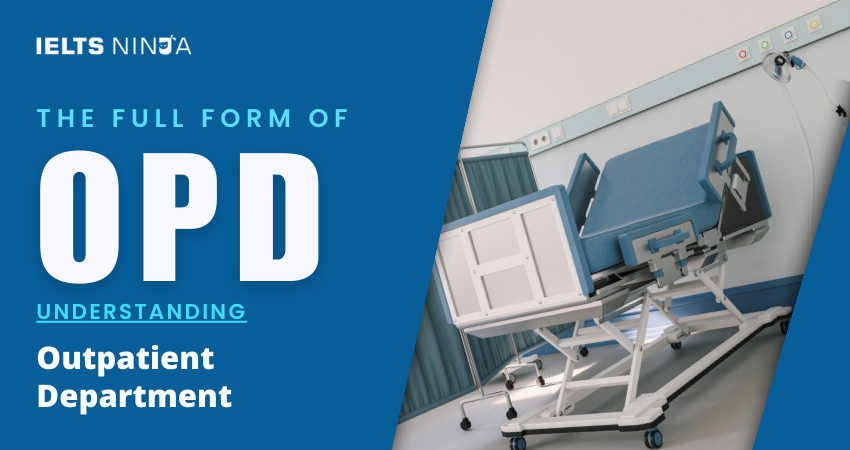In the realm of healthcare and medical facilities, acronyms often represent specific departments and services that play a crucial role in patient care. One such acronym that is commonly used in hospitals and clinics is “OPD”. OPD stands for “Outpatient Department.” In this article, we will delve into the full form of OPD, understand its purpose, functions, and its critical role in delivering healthcare services to patients who do not require hospitalization.
What Does OPD Stand For?
OPD stands for “Outpatient Department”. यह है a specialized section within a healthcare facility, such as a hospital or clinic, where patients receive medical diagnosis, treatment, and care without the need for admission or overnight stay.
Understanding OPD (Outpatient Department)
The Outpatient Department (OPD) is an essential component of healthcare institutions. It is designed to provide medical services to individuals who have medical concerns or require routine healthcare services but do not need to be admitted to the hospital. The primary focus of the OPD is on outpatient care, which includes consultations, diagnostic tests, treatments, and follow-up appointments.
Key Details and Features of OPD
Consultations:
Patients visiting the OPD can schedule appointments with healthcare professionals, including doctors, specialists, and nurses, to discuss their health concerns and receive medical advice.
Diagnosis:
The OPD offers diagnostic services such as laboratory tests, radiology (X-rays, CT scans, etc.), and medical imaging to aid in the diagnosis of medical conditions.
Treatment:
Patients receive various treatments in the OPD, including medication, minor procedures, wound care, and therapies such as physiotherapy.
Follow-up Care:
The OPD is also where patients return for follow-up appointments to monitor their progress, adjust treatment plans, and receive ongoing care.
Specialty Clinics:
Many OPDs have specialized clinics for specific medical disciplines, such as cardiology, orthopedics, dermatology, and pediatrics, making it convenient for patients to access specialized care.
Emergency Care:
In some healthcare settings, the OPD may include an emergency or urgent care section to address immediate medical needs that do not require hospitalization.
Primary Care Services:
The OPD often serves as the first point of contact for individuals seeking primary healthcare services, including preventive care, vaccinations, and health screenings.
Prescription Services:
After consultations, patients can receive prescriptions for medications that can be filled at the hospital’s pharmacy or an external pharmacy.
यह भी पढ़ें: सर्वश्रेष्ठ ऑनलाइन आईईएलटीएस कोचिंग एवं प्रशिक्षण अकादमी
Advantages of OPD
Cost-Efficient:
OPD services are generally more cost-effective than inpatient care, as patients do not incur expenses related to hospitalization.
सुविधा:
Patients can receive medical care and treatment while continuing with their daily routines, minimizing disruption to their lives.
Timely Access:
OPDs often offer quicker access to medical services, reducing wait times compared to inpatient services.
Preventive Care:
OPDs are crucial for preventive healthcare, allowing individuals to address health concerns early and receive vaccinations and health screenings.
निष्कर्ष
In conclusion, the Outpatient Department (OPD) is a vital component of healthcare institutions, providing a wide range of medical services to patients who do not require hospitalization. It plays a pivotal role in offering consultations, diagnostic services, treatments, and follow-up care, contributing to the overall well-being of patients. As you encounter the abbreviation “OPD” in discussions related to healthcare and medical facilities, remember that it signifies a dedicated department focused on delivering outpatient healthcare services efficiently and effectively.








